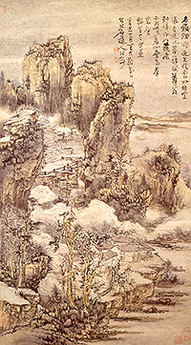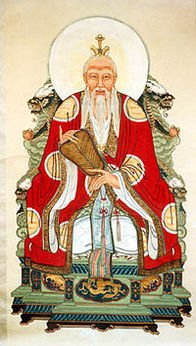Daosim
Britney Spindler
Britney Spindler
|
Daoism, traditionally “Taoism”, was developed in China and has experienced a variety of levels of favor by Chinese government. Laozi, a famous Chinese philosopher, is considered to be the founder of Daoism. Laozi proposed that people approach life through pacifism and indifference to outside forces. The key focus of Daoism is action through nonaction, and the inter-relation of each thing in the universe. Daoist philosophy theorizes that each thing has an opposite, and that these things would effectively not exist if not for that opposite. The idea of “yin and yang” embodies this theory. Day would not be day if one could not compare it to night. Additionally, Daoism takes great influence from the forces of nature. Nature develops and progresses without conflict – Daoists theorize that humans should function similarly. Events should unfold with as little conflict and force as is possible. Daoism recommends that people also live simply and take from nature rather than industry.
|
Left:"Temple on a Mountain Ledge". Chinese landscape paintings were often largely inspired by Daoism, which constantly searched for harmony with nature.
Right: An artist's depiction of Laozi a Daoist deity. As Daoism diffused into Chinese culture it became a religion with figures of worship. Click each for their respective sources. |
This passage from the Daodejing, one of Daoism's key pieces of literature, highlights the values and ideals of this philosophy:
"A small country has few people.
Though there are machines that can work ten to a hundred times faster than man, they are not needed...
Though they have boats and carriages, no one uses them...
Men return to the knotting of ropes in place of writing.
Their food is plain and good, their clothes fine but simple.
They are happy in their ways.
Though they live within sight of their neighbors,
And crowing cocks and barking dogs are heard across the way,
Yet they leave each other in peace while they grow old and die."
Though there are machines that can work ten to a hundred times faster than man, they are not needed...
Though they have boats and carriages, no one uses them...
Men return to the knotting of ropes in place of writing.
Their food is plain and good, their clothes fine but simple.
They are happy in their ways.
Though they live within sight of their neighbors,
And crowing cocks and barking dogs are heard across the way,
Yet they leave each other in peace while they grow old and die."
The Daodejing is a poetic volume written by Laozi to guide himself and others to a simple life of nonaction. The Daodejing declares that people should "Give up learning and put an end to [their] troubles." Although this seems to fall in direct conflict with Confucianism, which promotes learning and active duty, people often followed the ideals of Daoist philosophy in conjunction with Confucianism. However, inaction is in the very nature of Daoism; because of this, it never became an official governmental force. In spite of this, it gradually became a ubiquitous force in Chinese culture because of its use in conjunction with Confucianism. People took aspects of Daoist philosophy into parts of their every day lives. As Daoism diffused it changed and incorporated different parts of ancient Chinese philosophy into its ideals - cosmology, God-figures and sorcery became aspects of Daoism which the Chinese public eagerly incorporated into their beliefs.
Works Cited
"Lao-Tze." Hyper History. N.p., n.d. Web. 05 Nov. 2012. <http://www.hyperhistory.com/online_n2/people_n2/persons1_n2/laotze.html>.
Littlejohn, Ronnie. "Daoist Philosophy." Internet Encyclopedia of Philosophy. N.p., 18 Sept. 2003. Web. 05 Nov. 2012. <http://www.iep.utm.edu/daoism/>.
"Taoist Philosophy." HowStuffWorks. Discovery Communications, n.d. Web. 09 Nov. 2012. <http://people.howstuffworks.com/taoist-philosophy.htm>.


